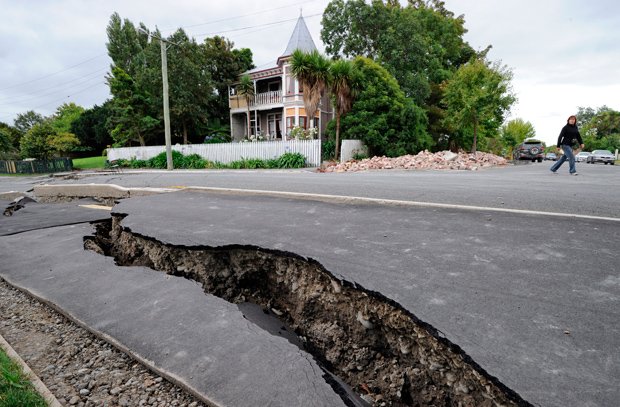Living in an earthquake zone

The uncertainty is not over yet, here in Christchurch, New Zealand. Earthquake experts are predicting more shakes here for years to come. For those that have survived, bizarre and surreal scenes have become part of our daily lives.
For the rest of the world, the big one was 22 February, 2011. That 6.3-magnitude shallow earthquake claimed 185 lives and shook Christchurch to a standstill. But the tremors keep coming.
We’ve now had 40 earthquakes between magnitude 5 and 6 in Christchurch since 4 September, 2010. There have been more than 10,000 quakes in total and nearly 600 of them have been five kilometres or less in depth. Tens of thousands of homes and buildings have been destroyed and being pulled down or have collapsed from New Zealand’s worst ever natural disaster.
But big shakes on June 13 and December 23 last year cannot be underestimated in terms of structural damage and mental anguish. The two big jolts just before Christmas sent many people packing. Others have felt anger and despair. The frequent freight-train noise of the big quakes is frightening.
While the eastern area of the city has borne the brunt of the damage, other leafy suburbs have been battered into submission following 18 months of earthquakes.
Once-manicured, tree-lined big-section streets are now scruffy, collapsed, buckled beyond belief in some places. Footpaths are gnarled, warped and pot-holed. Many robust homes that survived 4 September 2010 and 22 February, 2011 quakes have finally been red-stickered (meaning the building is unsafe and needs to be demolished) after big shakes on Junes 13 and December 23 last year.
Emotional scars of Christchurch earthquakes
Physical scars and empty lots of a battered city are plain to see while mental anguish hovers following predictions of possibly more big ones to come. Those that remain in this city of once 400,000 people are coping stoically.
The jolting is relentless. Chaos, even in everyday life, is the norm. My suburb once had three or four churches; now they are gone. The corner dairy, deli, florist, women’s clothing shop, café are gone. My local supermarket is no longer operating. Pot-holed patched roads remain blistered and twisted.
This once English of New Zealand cities is like a war zone; but there is no sign of the enemy. People’s lives shattered forever. The mood and atmosphere around the streets and suburbs of Christchurch is one of anxiety. We know more big quakes will come – we are just not sure when or where we will be when they come.
Christchurch residents’ resilience
With every big shake, power poles, walls and the ground wobble about like jelly. But people are mostly positive and resilient; this is a special and strong community. I am so grateful I’m alive and have nothing to complain about.
We still can’t see inside our inner central city. Our office blocks, cafes, restaurants, bars, hotels and city shops have been cordoned off for over a year. Most of inner city Christchurch will be knocked down. So many landmark buildings have already vanished.
The city centre’s red zone is like a ghost town. We can’t remember what buildings stood where. A small precinct of shipping containers has been converted into a lovely safe shopping area in Cashel Mall. It’s a bold start. The rebuild has begun cautiously.
It feels like we’ve been living through this forever. Many people are traumatised. Christchurch will rise again – just not yet. It will be decades before settled life truly returns to normal here.

